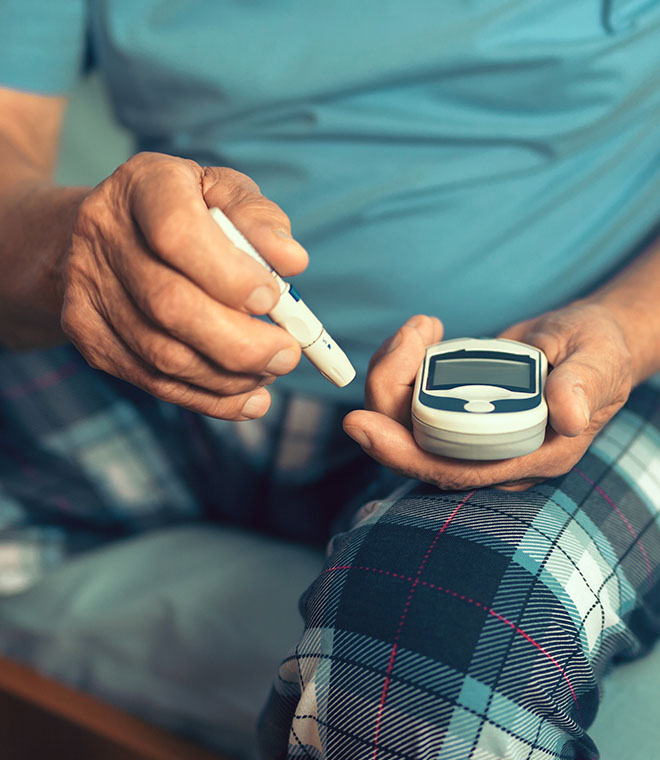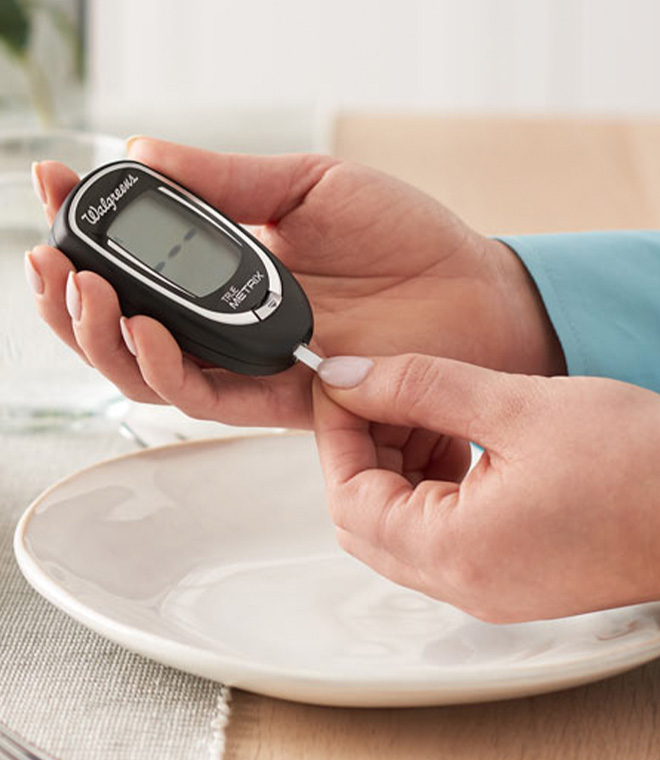Health
Have diabetes? Know your numbers
By Jenilee Matz, MPH Jul 21, 2021 • 8 min
Diabetes is on the rise.
More than 34 million Americans have diabetes, and 7 million of them don't even know they have it yet. What's more, about 88 million adults are considered to have prediabetes.
Don't let these numbers alarm you too much, though. Instead, focus on the numbers you might be able to control. Your blood sugar (glucose) levels and other numbers can reveal a lot about your health. Knowing these numbers is the first step to taking charge of your diabetes. And keeping them in check can help reduce your risk for dangerous complications, like heart attack, blindness and infections.
Numbers for diabetes diagnosis
Everyone should be tested for diabetes starting at 45 years of age. Your healthcare provider will test you earlier if you have certain symptoms or risk factors. Tests for diabetes include a glycated hemoglobin (A1C) test, an oral glucose tolerance test (OGTT) or a fasting plasma glucose (FPG) test. Or, if you have symptoms present, you may only have a random plasma glucose test (RPG). Note that you may have more than one of these tests done before your provider makes a diagnosis.
A1C test results:
The A1C test shows your average blood sugar level over the past two to three months.
- Normal blood sugar: Below 5.7%
- Prediabetes: 5.7% to 6.4%
- Diabetes: 6.5% or above
FPG test results:
The FPG test measures your blood sugar after not eating for at least eight hours
- Normal blood sugar: 99 mg/dL or below
- Prediabetes: 100 to 125 mg/dL
- Diabetes: 126 mg/dL or above
OGTT results:
This test measures your blood sugar levels before and after you drink a liquid solution that contains 75g of glucose.
- Normal blood sugar: 139 mg/dL or below two hours after drinking the liquid
- Prediabetes: 140 to 199 mg/dL two hours after drinking the liquid
- Diabetes: 200 mg/dL or above two hours after drinking the liquid
RPG results:
If you have symptoms of diabetes, your healthcare provider may want to test you for the condition right away, without allowing time for fasting. In this case, you may have an RPG, which can be done at any time. A single reading of 200 mg/dL or above likely indicates diabetes.
Blood sugar numbers
If you have diabetes, some numbers are key indicators of how well you are managing your condition. Keeping your blood sugar under control can reduce your risk of developing diabetes-related complications, such as heart disease, stroke or kidney problems.
Daily blood sugar readings
Testing your blood sugar several times each day with a blood glucose meter, or glucometer, can be critical to your health. Self-blood sugar checks show exactly what your blood sugar is at the time of the test. These readings show you how food, exercise, medication and stress affect your blood sugar. They allow your healthcare provider to adjust your diet or medications to maintain good blood sugar control. It's recommended that people with diabetes aim to keep blood sugar at the following levels:
- Before meals: Between 80 and 130 mg/dL
- About two hours after the start of a meal: Below 180 mg/dL
Know that these numbers are just general guidelines. Some people with diabetes may have a different target blood sugar range. Your healthcare provider will let you know what yours is. They can also tell you safe blood sugar levels for before, during and after exercise.
Keep a record of your blood sugar readings and bring it with you to all appointments. These numbers can help your provider tell if your diabetes care plan is working.
Hemoglobin A1C levels
Daily blood sugar readings don't show the whole picture, though. They can tell you what your sugar is at a moment in time, but levels fluctuate. Sometimes they're high and other times they're low. So how can you know if your diabetes treatment plan is working?
That's where the hemoglobin A1C test comes in. The A1C test measures the amount of sugar that sticks to hemoglobin, the oxygen-carrying protein molecules in red blood cells. When blood sugar is high, more sugar will enter the red blood cells and attach to hemoglobin. It remains there for the life of the red blood cell. This means the A1C test will show your average blood sugar level over the past two to three months. A lower A1C means your diabetes is likely under control, and a higher A1C level means your blood sugar levels have been high over a period of time.
A1C results are reported as a percentage. An A1C level of less than 7% may be recommended for people with diabetes, though your healthcare provider may have a more specific target for you. Keeping your A1C level at or below goal level can reduce your risk of developing diabetes-related complications. If your A1C is high, your diabetes treatment plan may not be working, and your provider may need to make adjustments.
You'll need to have the A1C test at least twice a year. Your healthcare provider may run the test more often if your A1C level is high or if your diabetes treatment plan changes.
Other important numbers
Your daily blood sugar readings and A1C levels aren't the only numbers you need to know. Keeping other numbers on target will also help reduce your risk of complications. Following your diabetes treatment plan as prescribed will help you reach these goals:
- Blood pressure: Ask your healthcare provider what your blood pressure should be. In general, blood pressure below 130/80 mmHg is recommended for people with diabetes, high blood pressure and a high risk of heart disease. A target below 140/90 mmHg may be recommended for those with diabetes, high blood pressure and a low risk of heart disease.
- Cholesterol: Ask your healthcare provider what your LDL ("bad" cholesterol), HDL ("good" cholesterol) and triglyceride levels should be. Your goals will depend on your age, cardiovascular disease risk factors and if you take a statin medication to control your cholesterol.
- Weight: If you're overweight, your provider will help you set a weight loss goal.
Clinically reviewed July 2021.
Sources:
1. https://www.cdc.gov/diabetes/data/statistics-report/index.html
2. https://professional.diabetes.org/sites/
3. https://www.niddk.nih.gov/health-information/diabetes/overview/tests-diagnosis/a1c-test
5. "Standards of medical care in diabetes," Diabetes Care. 2021. Jan; 44 (Supplement 1): S1-S226. https://www.diabetes.org/
6. https://www.niddk.nih.gov/health-information/diabetes/overview/tests-diagnosis#who
7. https://www.cdc.gov/diabetes/managing/manage-blood-sugar.html



